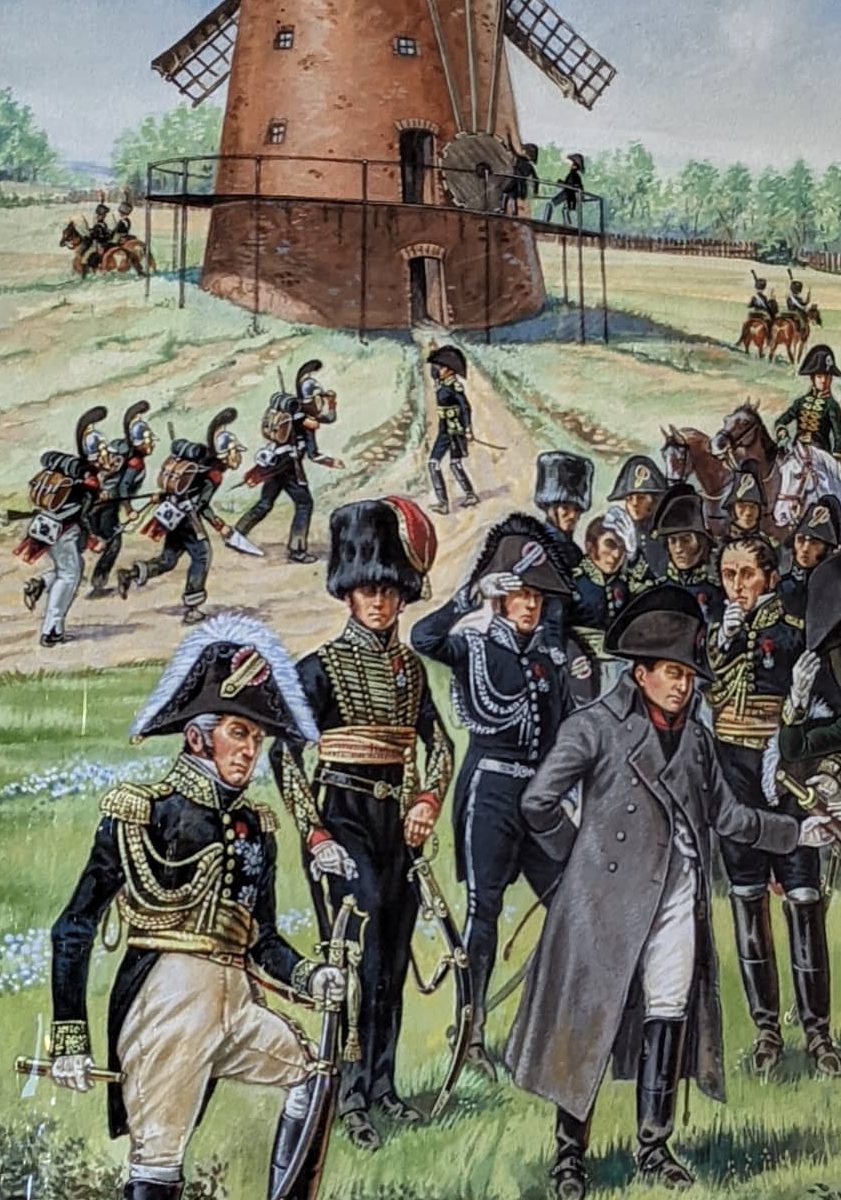Waterloo 2022 – Quatre Bras and Ligny was one of the days I was most looking forward to. I’ve previously done a whistle stop tour of some of the Waterloo museums, but I’ve never been to either of these sites. I’ve also read nothing about them other than a brief mention at the beginning of many books on Waterloo. I was well aware of the significance of both of these actions in the rest of the campaign but other than that, I knew very little.
At some later stage, when I get to it, I’ll do a proper post on the whole campaign. These posts aren’t designed to tell you what happened on those days in 1815 but to describe my own experience of touring the battle sites with Number One London Tours led by Gareth Glover and Kristine Hughes Patrone.

Our tour today began in Fleurus, a town to the south-west of Ligny. Napoleon arrived at Fleurus with his staff and escort on the morning of the battle and reached the Fleurus windmill. He apparently ordered his engineers to build an observation platform by knocking out part of the roof and climbed up to survey the situation for himself. Throughout the tour, Gareth returned regularly to the issue of how much of the battlefields could actually be seen by the various army commanders. Napoleon remained well-back from the fighting for most of the day, while Wellington was positioned further forward, and in his usual manner, moved around the battlefield at different times.
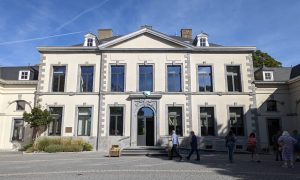
We next moved on to the Chateau de la Paix, which is now used as local government offices. After his victory over the Prussians at Ligny on 16th June, Napoleon retired that evening to the Chateau in Fleurus, while his troops camped in the surrounding area. During the night Napoleon shut himself off from the outside world for as long as he could. He was inactive for almost eleven hours while the Prussians escaped. They were bloodied and much depleted but still effective enough to march to support Wellington at Waterloo.
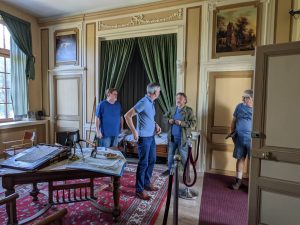
The room occupied by Napoleon in the Chateau has been reconstructed with period furniture. Our local guide Laurent was an excellent storyteller with a great sense of humour and he talked about the battle, the aftermath and what might have gone wrong for Napoleon. He and Gareth agreed with the possibility that treatment for a severe case of haemorrhoids might well have affected Napoleon’s behaviour that night and could possibly have affected some of his decisions. For anybody wanting to visit the Chateau, you have to book in advance and details are on their website. If all the guides are this good, I strongly recommend it.
 Our next visit was to the small but very good museum in Ligny. It covers both Ligny and Quatre Bras and gave a very good sense of what happened on 16th June in these small villages and towns as the French inflicted a bloody defeat on Blucher’s Prussians and fought to a stalemate against Wellington’s Allied army. I was shocked at the extent of the casualties at both battles. Somehow I’d always had the vague impression that these were just skirmishes ahead of the main battle, but they clearly weren’t. All three armies were weakened by what happened on this day and it must have had an effect on what happened at Waterloo.
Our next visit was to the small but very good museum in Ligny. It covers both Ligny and Quatre Bras and gave a very good sense of what happened on 16th June in these small villages and towns as the French inflicted a bloody defeat on Blucher’s Prussians and fought to a stalemate against Wellington’s Allied army. I was shocked at the extent of the casualties at both battles. Somehow I’d always had the vague impression that these were just skirmishes ahead of the main battle, but they clearly weren’t. All three armies were weakened by what happened on this day and it must have had an effect on what happened at Waterloo.
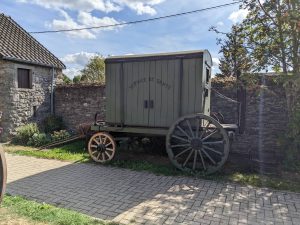
From my own perspective, I was delighted to find a French flying ambulance wagon in the courtyard outside the museum. Anybody who has read the Peninsular War Saga will know that Anne van Daan has been persecuting Wellington about ambulance provision for three books now and if he wasn’t so fond of her he’d probably have strangled her. I’ve read about these and seen pictures but it was great to meet the real thing.
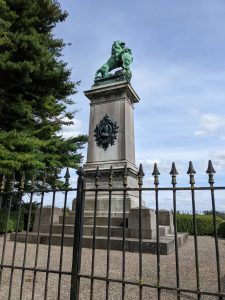
We made our way up to Quatre Bras. There’s very little to see there, as the original farmhouse has been pulled down and there’s a lot of building in the area. Gareth did a good job, pointing out those sites and memorials around both battlefields which can still be seen. Even with limited access he managed to give a clear picture of what happened in both battles and had a wealth of personal accounts to read of what happened to individuals on the day.
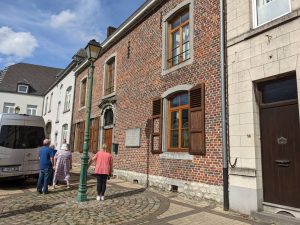
We drove through Genappe, looking at the routes taken by the various armies and stopped for a photo opportunity at the Auberge du Roy d’Espagne. This former inn was used at different times by the Duke of Wellington, Prince Jérôme Bonaparte and Marshal Blücher, who stayed at the inn after Waterloo and reputedly left it in Napoleon’s sedan. There is a picture of the Prussian generals celebrating their victory at Waterloo, but the inn also housed the wounded French General Guillaume Philibert Duhesme who died there on June 20, two days after the battle, probably while the Prussians were still celebrating in the next room.
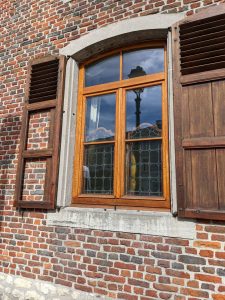
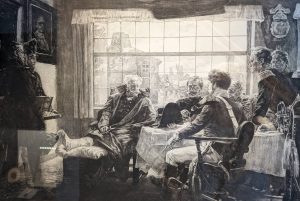
Another long day on the tour, with moving accounts from both Gareth and Kristine about the battles and their aftermath. Tomorrow is museum day, with visits to the Wellington and Napoleon museums, the church in Waterloo and the Mont St Jean medical museum.

